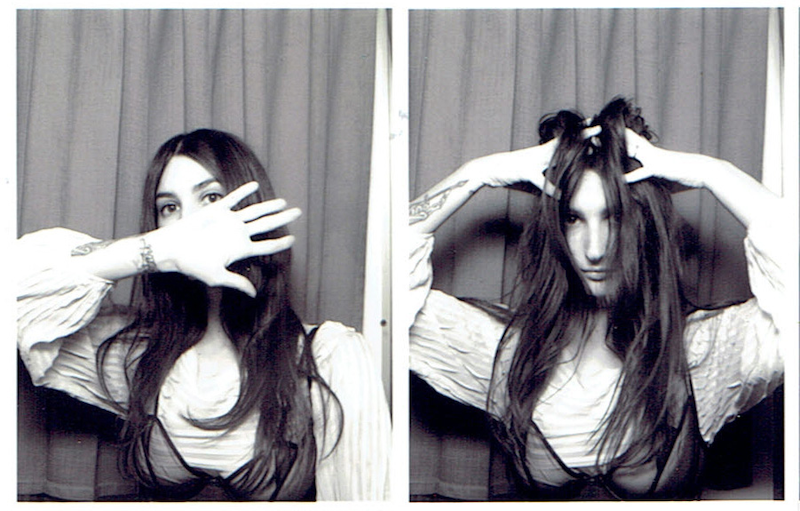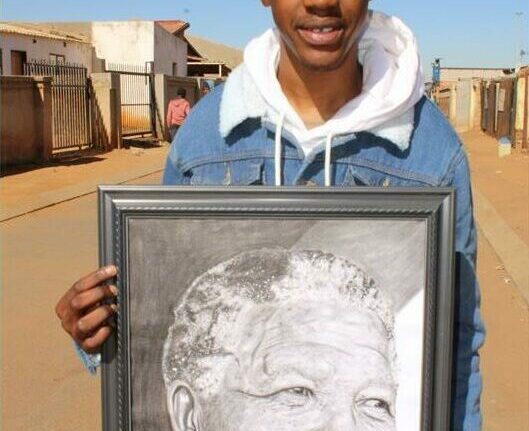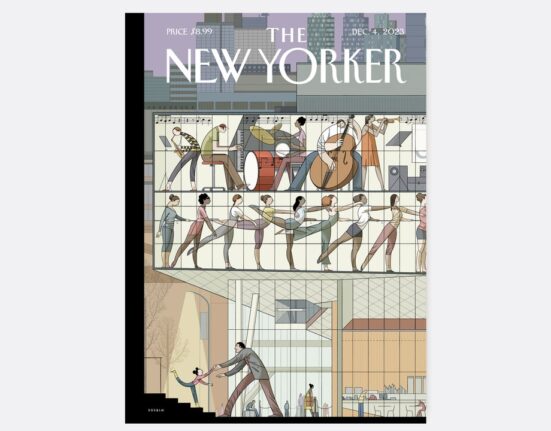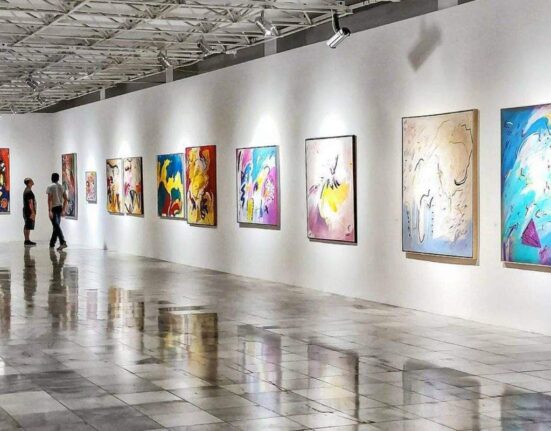Visual artist Noelia Towers on using yourself as the subject, making art with a chronic illness, working outside the gallery system, and the ugly truths of the creative process.
You paint portraits of yourself and the immediate world around you. How do you find the energy to keep returning to the subject of yourself? Do you ever hit a wall?
There are definitely days where I ask, “What is there for me to do?” That also goes with feeling unmotivated or being in a rut and thinking, “I don’t know if I even like what I’m doing.” There is always a lot to do, or that needs to be done, or things I want to express, of course, but I don’t always know how to visually put them together. I won’t know what’s next during those moments, but then I’m cooking or taking a shower or whatever, and I realize, “Wait, this would be an awesome visual of how I feel about this thing, or how this aspect of my life affects me.” It happens randomly. It comes in the form of a very clear image in my head, and I realize that I have to paint that.
A part of it, too, is documenting and living with the chronic pain associated with ulcerative colitis. It’s not an idealized version of yourself—it’s the bruises of the everyday. How important to you is it to continue this work from a mental health standpoint?
It’s definitely a form of therapy. It’s a way of sharing my experience. I know there are people out there that feel the way I do. I mainly do this for myself in the form of healing, but people will also come up to me and be like, “This is exactly the same thing that happens to me, and no one has ever been able to describe it this way.” So I feel very seen.
What keeps me going is knowing that, through my work, I can be seen in a very vulnerable way and that people can relate to that. Maybe they didn’t have a platform, or nobody was doing this before. So it is therapy for myself, but at the same time, when I’m opening up about this, I build a sense of community with other people, even random strangers, and it creates a very strong connection.
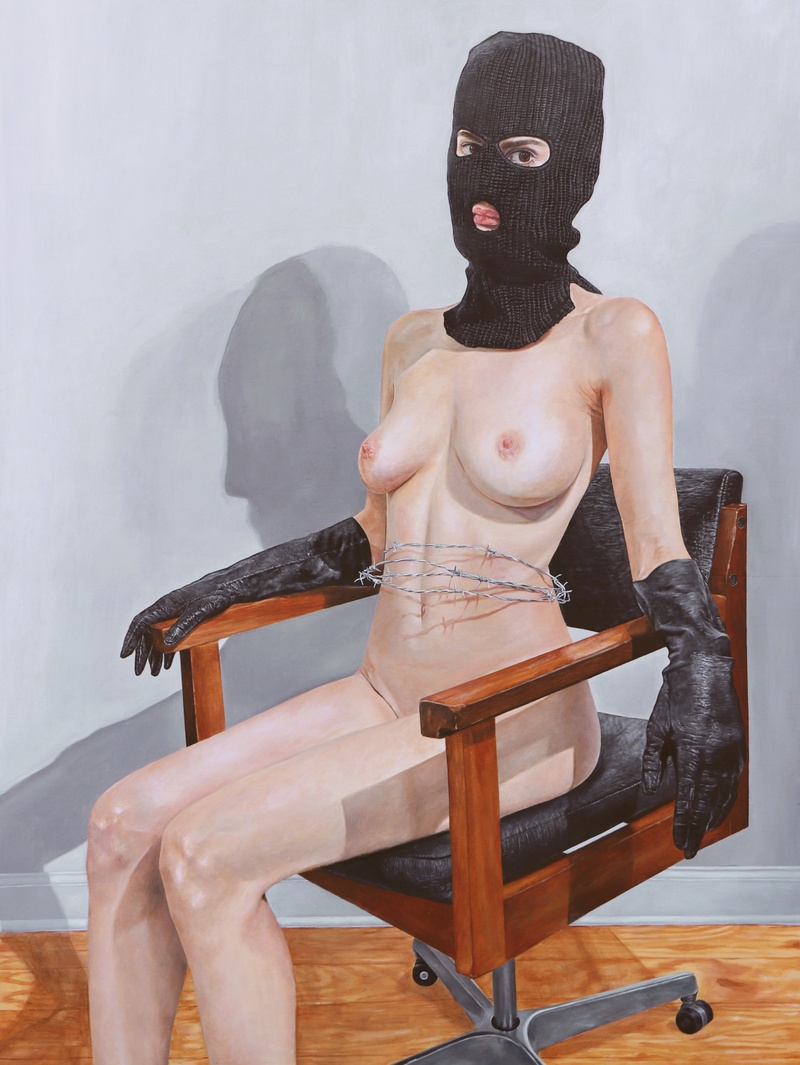
Noelia Towers, The Pain That Keeps On Giving, Acrylic on Wood, 36 x 48 inches, 2019.
Because the work is so personal, do you find it hard to sell it or part ways with a piece?
It used to be hard, but now I realize I can just make a copy. I can take a photo and keep it on my computer. It will just be collecting dust in my room anyhow. I also feel like it needs to be shared.
Also, sometimes I think, “Oh my god, I don’t give a fuck about this painting that I just did. I don’t care. I don’t care. I don’t care.” Then, when it’s gone, I think, “Why did I sell it? Why did I do that? I’m an idiot.”
It’s also a matter of me not valuing my work enough. Sometimes I think, “This is just a painting. It’s nothing. It’s just a material thing. I can just give it away if I want to.” But then in time I think, “What if this is worth more than I got for it?” I go from feeling worthless and feeling like, “This is worth nothing,” to feeling like I’m Leonardo da Vinci.
Do the polaroids have the same cathartic value for you? How do you see the paintings and photos overlapping or interacting?
I want to take more photos. I’ve been stuck with that and not doing much of it for now, but it’s a different outlet and it’s quicker and easier. It’s a way to put a thought into visual forms and be like, “This is how I’m feeling. This is what I want to represent right now.” It’s just so easy to do. With painting, you have to meditate about it, and it’s trial and failure and trying again. It requires a lot of energy.
It’s so precious to me. It’s a process. It’s a ritual. It’s much different. I always ask myself, “Why couldn’t I be a photographer or something?” Analog photography is more complex and complicated than that, but it’s still clicking a button. It’s not sitting in front of a panel or a canvas or whatever surface you paint on for hours on end. I think, “Why couldn’t I just pick something different? Why did I have to pick the most tedious of them all?”
I usually take photos of everything. I’m not very good at life painting because I have very weak concentration skills, and it will take me 10 hours and I don’t think a model would stand in front of me for 10 hours. That’s a lot. Unless they’re into suffering, then I’m down.
What is the ritual to begin a painting?
The ritual to begin painting is a lot of self-loathing. Right now, I’m painting something that I’m very excited about. I’m having a lot of fun right with the piece, which is odd. This is not what usually happens.
What I’m painting is a friend of mine. She’s a dominatrix and I’m painting her with one of her bitch boy subs. I guess I just find things that I think are really inspiring and I see something relatable in them and I think, “This is what I want to paint. It’s visually very appealing. I want to do this.” I’m interested in other things besides just expressing myself. And, through painting other people, I can find things about other people that I didn’t see in myself. I know that sounds very cheesy, but it’s very true. People teach me things and I learn from them through painting them.
But I usually struggle and it’s hard to find the motivation, especially when I feel awful most of the day, and whenever I complete the smallest, most random task, I feel like garbage and I need to take a two-hour nap. That’s something people don’t know or don’t see because it’s behind-the-scenes.
Some people are like, “Why don’t you stream yourself painting?” Or, “Why don’t you make videos of yourself painting?” And I say, “Because it will be me just getting distracted with my ADD. It would be me going back to the couch to take a nap in the middle of painting.” My body’s not capable of sitting for eight hours in front of my panels. It requires a lot of, “Okay, here we go. I have to go paint now.”
You know what they say, that when you have a job you love, you don’t work a single day of your life? That’s bullshit. You work harder and you do things that you don’t want to do, but you have to… that’s where I’m at with painting. It’s like, I hate it, and I love it at the same time. But when the painting’s done, I’m really proud of myself and I can look back at everything I’ve done and be like, “I did that. My flimsy-ass body and my low attention span did that.” It’s very rewarding, and the reward gives you an adrenaline rush and you’re like, “Okay, I’ll keep painting.” And then you have to start a new painting and you think, “I don’t want to begin this. Why did I do this?” It’s a lot of ups and downs.
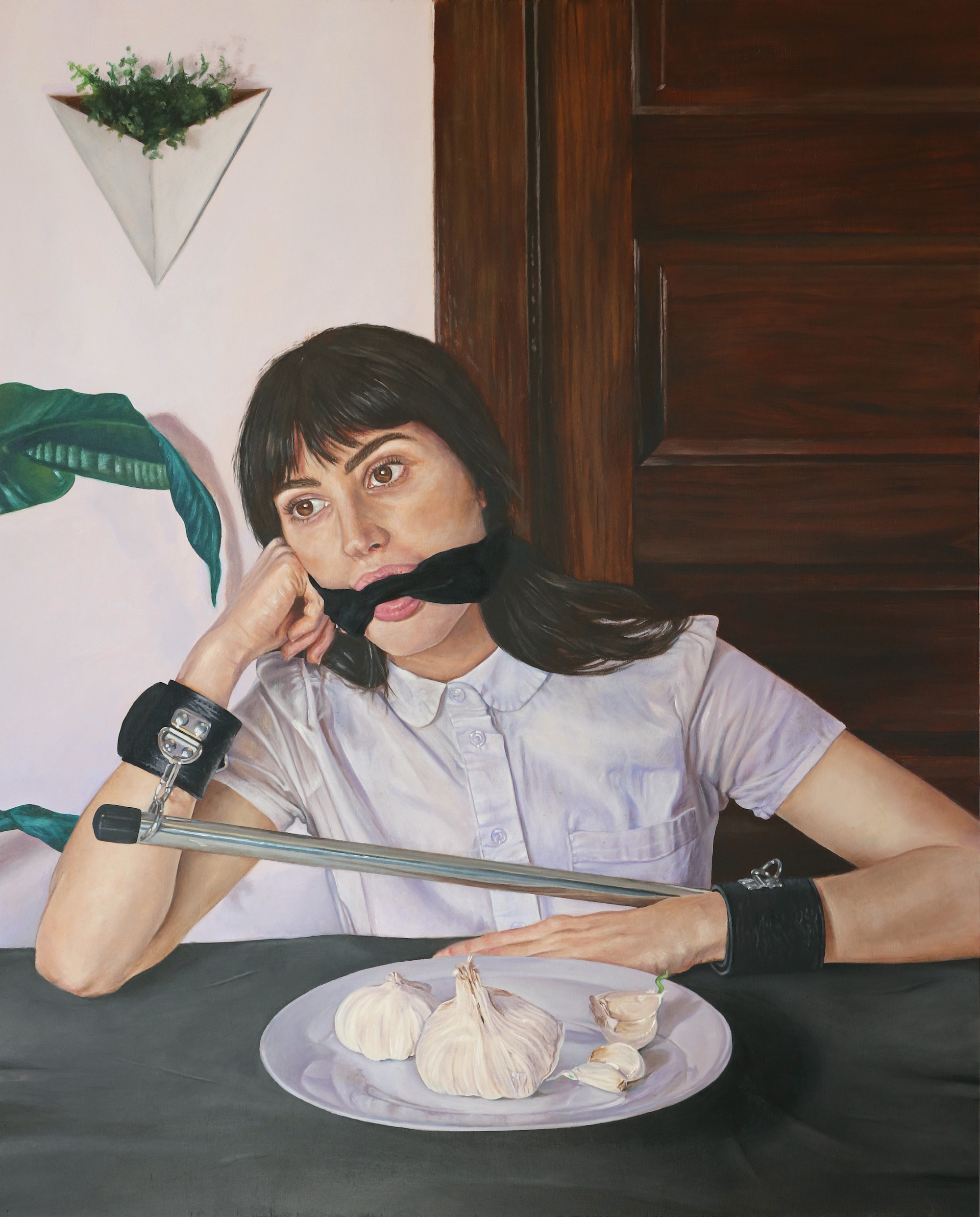
Noelia Towers, Just Because You Shouldn’t Doesn’t Mean You Can’t, acrylic on wood, 24 x 30 inches, 2019.
If you’re working on a painting and it’s not coming together, are you willing to just let it go and scrap it, or do you try to work on something until you complete it?
I don’t think that’s ever happened to me. I just commit to finishing it, even if I hate it. I’ve done paintings that when I’m done I think, “This is awful. I’m disgusted I even did that.” But it’s part of your work. You’re not going to be perfect at everything you do. Nothing comes out of the oven looking like a perfect child. That’s impossible. Hating things you do is part of art and part of being an artist.
If you finish a painting you don’t like, is it something you just store, or are you willing to show that to the public?
I’m still going to show it and make sure everybody knows how much I hate it. People feel obligated to say, “Oh my god, no, it’s awesome.” And I okay with saying, “Don’t lie to me and don’t tell me what you think. I’m just telling you how I feel about this piece I created. You didn’t do it. I did it. And I think it’s garbage, so I’m putting it out there, but I know how I feel about it. There’s no way around it.”
It’s a weird feeling, but I still show it. I think somebody out there might like it, even if I don’t, and life goes on. It’s not a big deal.
You’re frank about the struggle of making work. There’s a large part of any creative vocation where so much is about trading on a persona: “Whatever I make is perfect; whatever I do is flawless.” Have you always felt comfortable with dispelling that kind of persona and just being frank and like, “This thing is complicated”?
I’m like this with everything. I do other things besides painting, and I’m not the greatest at them and I don’t care. Society has forced us to only commit to things that we know we’re good at. It’s almost like, “If you’re not good at this, you shouldn’t do it.” And it’s like, “No, do it. Fuck it up. Even if you’re not good at it, just do whatever makes you happy, and it doesn’t have to be perfect.” But we are obsessed with perfection and what things should be like. I don’t think it should be like that at all.
I’m very honest about everything. I never have anything to hide about what I do. It’s like, “Yeah, this is my process. This is how I do everything.” Not just painting. Even if I’m bad at it, I know I will get better. And if I don’t get better, who cares? I’m still having fun doing it. A thing that we lack as humans is showing how vulnerable we truly are. Everybody’s so afraid of people finding the demons under their bed. And it’s like, just show it. Turn it into something beautiful.
You were saying it’s difficult to make work and it’s a struggle to do it. That said, if you didn’t make work, would you feel worse? Is there a compulsion to do it?
Yeah, I have to. I think the longest I’ve been without painting has been maybe two months, and it certainly creates a state of depression. And I never know that what’s missing is that piece of the puzzle, which is painting, until I start painting again. Then I realize, “Oh, wait, I’m happier now, and it’s because I wasn’t doing this.”
I have so many things I do that bring me happiness. It’s not necessarily [just] painting, but painting is the only constant thing in my life. It’s the only thing I’ve been doing since I was a kid, and it’s always brought me so much joy and so much happiness, and whenever I’m not doing it, I’m depressed, and I wonder why I’m depressed. It’s not because I’m eating garbage. It’s not because I’m sleeping too much. It’s because I’m not painting.
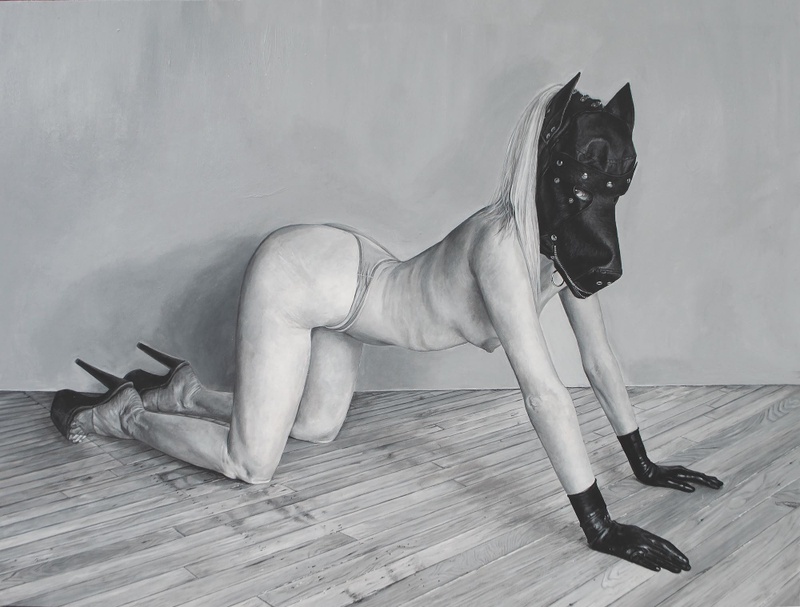
Noelia Towers, Don’t Abandon Me pt. 1 [Loyalty], 36 x 48 inches, 2018
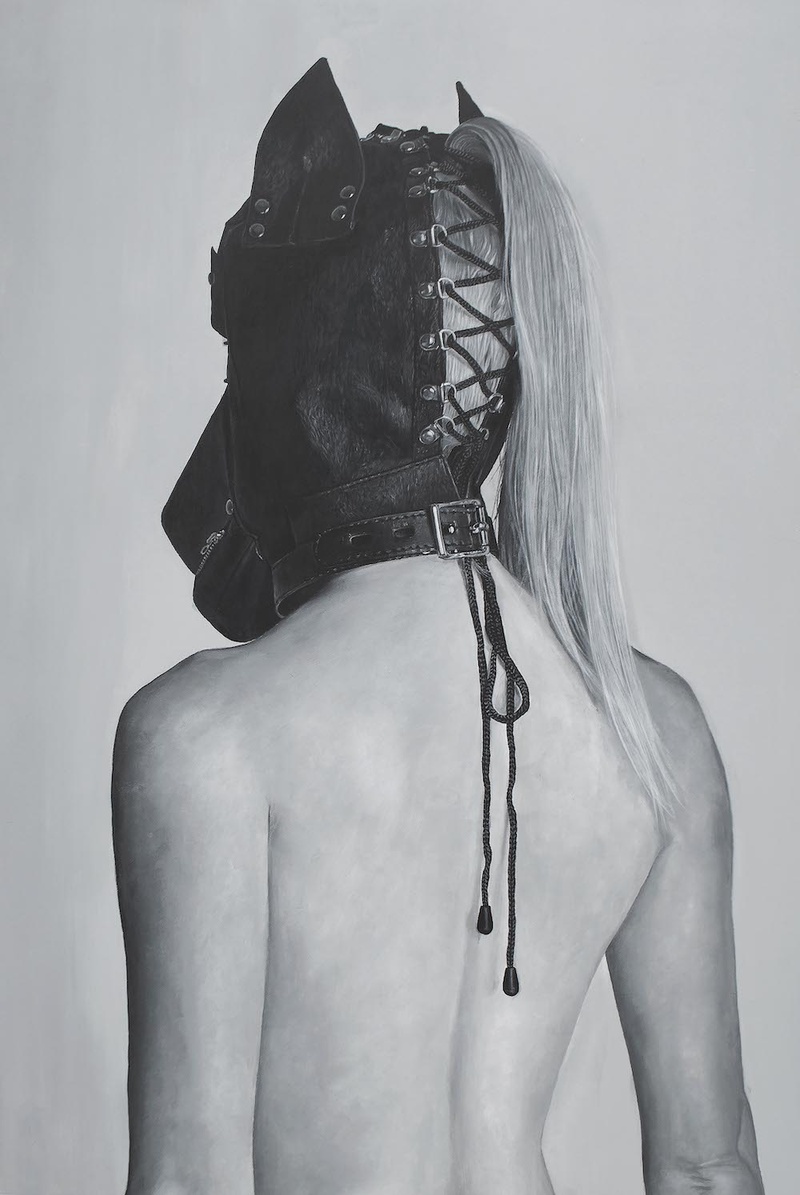
Noelia Towers, Don’t Abandon Me pt. 2 [Neglect], acrylic on wood, 24 x 36 inches, 2018
Have you been able to maintain the original childhood joy that came from completing a work, or just the act of painting?
Oh, absolutely. Whenever I finish a piece I’m very proud of myself. Again, if it’s a bad painting, then I hate it, and I don’t want to look at it anymore, but most of the time I think, “I did that. I finished it. I completed a task.” And to me, that’s very important. Sometimes more important than what the painting looks [like] by itself. It’s the fact that I’ve made it. I committed to something from start to finish and I did it.
Have you found that your processes have changed at all in quarantine, or is it the same as it’s always been?
When quarantine started, I was like, “I’m going to paint so much. I’m going to be so productive.” And from talking to other artists, including my husband, I noticed that a lot of people during this four, five, six months that we’ve been in lockdown have been less productive than they thought they would. And I feel like it’s because there has been so much stress and pressure about the current state of the world. Personally, I can only paint and be in a good state of mind to do it when I’m happy. I cannot get anything done for the life of me if I’m depressed or if I’m going through a very rough patch. I can’t do that.
I know a lot of artists, especially older artists, did their best work when they were at their lowest point in their lives. That’s not the case for me. And that’s not the case for a lot of people I know. Being worried constantly, every day, about when your next paycheck is going to [come], or, for a lot of musicians now, for example, when are they going to be able to tour again, it generates a lot of stress. It definitely has taken a toll on a lot of people’s mental health. It’s the same for me. When I’m happy, I can make better work. And lately it’s been really rough.
When you’re working, to get into the right mood to work, what’s your setup generally like? Do you just need the canvas and the paint, or do you have to do mental exercises or listen to music?
I have my desktop computer, and I have an easel mounted on the wall, and I have an iPad stand where I look at the photo that I’m painting, because I paint from reference photos. The iPad stand is important; it was very hard for me to figure out how to do that. I was usually looking at my desktop computer, but it was at a weird angle, so I would get very bad pain in my neck and ask myself: “Why is my neck sore?” And it’s because I kept turning to look at the computer or something very uncomfortable.
Growing up in a poor family, I was always very resourceful and I would work with whatever I was given. So sometimes it’s very uncomfortable doing things, but I still power through them because it’s the resources I have, and I don’t realize that I can maybe go online and buy an iPad stand, and it’s not a big deal. And I’m learning to be more kind to myself and give myself more a comfortable space, being like, “You don’t have to do this like this. There’s other ways you can make it easier for you.” That happened when I wasn’t painting that much. It’s because I didn’t have a very comfortable space for me to paint.
I always play a couple of shows from back home in Spain. They’re very hilarious shows that I grew up watching. I don’t really watch, I mostly listen, but they say the most random, hilarious shit. So I’m laughing, and next thing you know, you’ve been painting for six hours, because you’ve been watching the show and having a good time. I think that’s the key for me, having something in the background and drinking a lot of water. I wish I was better at meditating, but every time I meditate, I fall asleep, so that’s not very convenient for painting.
Do you have multiple paintings going at once, or do you have to complete one before moving on?
I have to focus on one thing at a time. I think it’s the only time that my ADD is not that bad, and the only time that I’m able to actually focus on one thing instead of being all over the place. I get distracted a lot looking at my phone because memes are really funny. Then I stop and think, “What am I doing? Come on. I took a little phone break to see what’s going on and now I’m just scrolling, and I wish I could just throw it away.”
I spoke to the artist William Villalongo a ways back. He said he doesn’t have a couch in his studio because he’ll lay on it and fall asleep, and he also doesn’t have WiFi because he’ll get distracted and look at other stuff. Knowing his own tendencies, he’s created a place where he can’t sleep or check his phone.
To be an artist, you have to have a lot of discipline and be a masochist. And I have one of them, but I’m not very disciplined. I’m not very strict with myself. It’s with everything. I shouldn’t eat chocolate and I’m constantly eating chocolate. We bought Snickers bars, like the ice cream ones that you put in the freezer. I ate almost all of them. I have no self-control. I wish someone would stand in my door with a whip, crack it and be like, “Get back to your seat. Keep painting.”
A painting coach.
That’s another thing. We’ve been conditioned to not indulge in other things, only work, work, work and no play, and things can be work and play at once. I don’t know why it’s meant to be the opposite way.
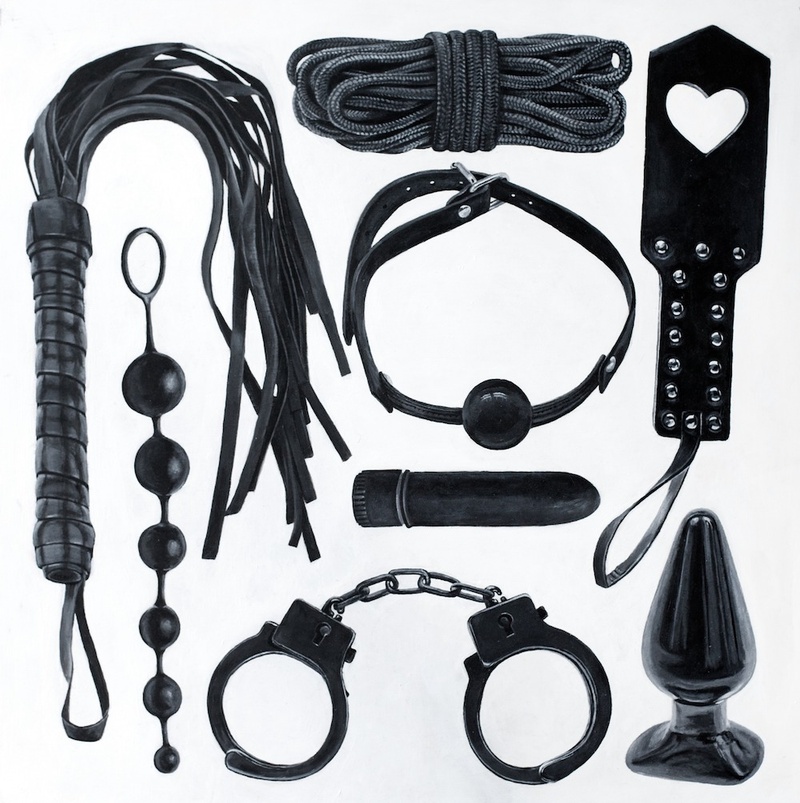
Noelia Towers, Pain / Pleasure, acrylic on wood, 20 x20 inches, 2016
It’s so easy to become overly regimented, and to forget that at the heart of a lot of this is joy and play. As adults, we can lose track of play. It’s so easy to get regimented and to forget to allow space for wandering.
You have to get creative. There’s a lot of connecting to your inner child with making artwork, because my happiest memories from being a kid were being in my room painting or grabbing wood scraps or whatever we had laying around at home and just nailing things on it or carving things on the wood and then painting and then dancing in my room.
You get to connect to that inner child when you’re creating something, to bring [out] that innocence and work and play. You know, you’re giving your kids things to do to distract them, but it’s also to stimulate this creativity. That’s what you really have to do as an adult. Things that seem like play, but they’re actually tasks, you’ve got to make them fun.
Do you find it hard having your studio in your house?. How do you move from just being in your house to “Right, I’m going to go paint”? Or how do you know, “Okay, I need to stop and get back to the normal part of my life”? Because it seems like there’s not a lot of separation between the two.
When you feel sick, you know. Your body’s like, “Okay, time to stop,” or, “Okay, you’ve been sleeping a lot. Time to get up, go paint.” Your body tells you. Sometimes I wonder what it would be like to have a separate studio, because I’ve never had a chance to. I don’t think I could afford it, especially living in a big city like Chicago. But also, I love being at home. I love being able to go to the fridge and get a snack to eat, or being able to go to the couch and lay down. I need a place to lay down, because I get very tired, or I need a place to take a break and just do nothing. So it feels comfortable to be at home.
It’s very distracting, especially when you have two kitty cats distracting you, but it works for me in a weird way. Maybe in a separate studio, I would be more productive, but I’m not willing to sacrifice producing more work for my health. We’re so obsessed with create, create, create, make, make, make, make more work. I’d rather make high-quality work than just a bunch of things because I have time to do it.
Every person’s process is different. If the process itself is tough enough, you need to have the surroundings comfortable in order to get in the right mood to do it so you’re not just torturing yourself. For other people, having something in their home wouldn’t work at all and they do need to have that separation. Someone I interviewed once said that when she was working on a book, she would make her husband take their modem away during the day so she couldn’t connect to the internet.
It’s a constant struggle to nail down a process that works. It’s not like suddenly you’ve mastered it because you complete one work; the next one won’t necessarily be easy. It’s just like, “Alright. Time to start all over again.” And it’s that same struggle all over again.
Exactly. You just gave me a really good idea. I think I’m going to give my phone to my husband when I paint and be like, “Don’t let me look at this. Keep it. Put it in a box. Bury it in the ground.” [laughs]
Sometimes I want to be like Frieda [Kahlo] and have a painting set up on my bed and just paint from the bed because I don’t feel like getting up And some other days I have more energy and think, “Maybe if I had a studio would be better.” Who knows?
As long as whatever you do works and you’re able to keep making work at a pace you want to make it at, that seems to be the important thing.
I’m curious: The art world and its gallery system is so closely connected to academia. You don’t have an art school background. What are some of the ways you’ve worked to get your art out into the world on your own?
Yeah. That’s the thing I didn’t know was a thing until I moved to Chicago from Barcelona. When I moved here, I started really submerging myself into the art world, and I realized that living in the city where most creative people go to SAIC, which is the college for arts in Chicago, they all have such a range of opportunities because of the networking that they get from being there. It’s like all of these people, most of them are trust fund kids, you know? So it’s hard to not come from money and want to make a name for yourself outside of going to an art school.
I’ve spoken to artists like Emma Kohlmann and Heather Benjamin, who came up via punk rock, and who managed, at first, to get the word out via social media, and not a specific gallery. Do you find social media helpful?
Social media has helped me a lot. The problem I face most of the time is the audience I reach, it’s not collectors or people bringing a lot of profit to my work. Most of them are just regular people. A lot of them are just like me, people struggling to make ends meet. There’s a few people who have become regular collectors of my work, but still, they don’t have the money that somebody related to an art college has. Like when they have the MFAs or end of year showcases, there’s actual people that go there looking for talent. They look for people who can bring something to the table that is new or good art, but I don’t have access to that. A lot of people don’t have access to that.
I have a friend, Oscar Chavez. He moved to New York from Chicago, and his art is about making it outside the academic aspect of art. It’s very hard. I’m still working on it, and thank god there’s social media. Otherwise, I don’t know what I would do at all. And most galleries that have show calls or openings, they have you pay a fee, which is so ridiculous. At least they should give feedback to you if you don’t make it in the show or whatever, you know? Then, if you want to sell your work, there’s another fee that the gallery takes to make money off of your work. And sometimes that fee is like, I don’t know, 40/60, but most of the time it’s like 50/50. And how is the gallery making half of your profits from your own work? How is that real? How is that happening? I feel like a lot of things need to change to give people more opportunities.
If you go to a museum, all of the art in the walls is [from] dead people. Where’s the platform for us? Where are the opportunities for us? Do we have to be dead for our artwork to be seen? In that case, I might fake my death and live under a rock for the rest of my life.
Do you have a full-time job?
I can’t keep a full-time job because my body doesn’t allow me to do that. I’ve always hustled, since I was little. I got my first job babysitting when I was 12 or 13 and I would teach outside of school as well, like teach English or whatever and help kids with their homework. That’s when I started hustling. I was very young and I started collecting records, so I would buy my own records with my own money and that felt very good. So I’ve always had this mentality of hustling, because my parents didn’t give me money. We didn’t have money, so you had to hustle.
You get in this mentality, and that doesn’t necessarily mean having a full-time job, but finding different outlets that you can monetize and still have time and energy to dedicate time for your artwork. People have this idea that I want to have free time and I want to just do what I love for a living, but that’s also not the case, because then I have all this time to sit with my thoughts and realize how depressed I am. You have to keep busy and also get lots of rest and keep a balanced, healthy lifestyle, which is not easy at all. We’re all still figuring this out.
Recommended by Noelia Towers:
5 things I have learned within the past decade:
Trauma and chronic illness make for good art subjects.
Never compare yourself or your work to others.
Allow yourself to rest and not feel guilty about it. Your worth is not equal to the amount of work you produce or the revenue you make.
Making a name for yourself within the art community when you haven’t had access to academia is hard.
Having a day job unrelated to your creativity does not make you less of an artist.
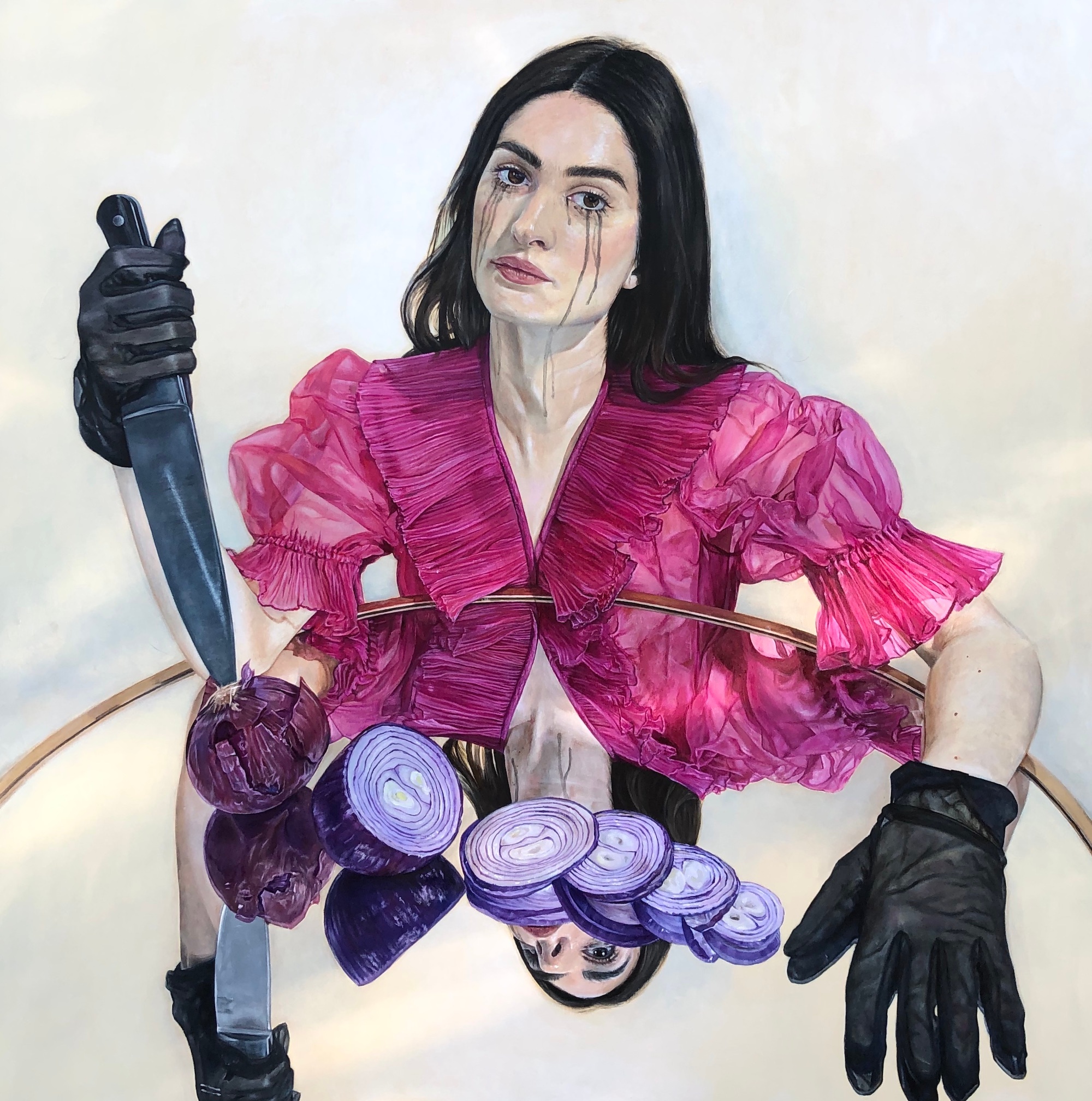
Noelia Tower, Ploramiques, acrylic on wood, 36 x 36 inches, 2019.

